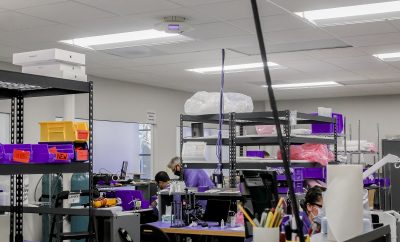
Lifestyle
How Far Off Are Designer Babies?
In the 1997 movie Gattaca, a couple heads to a clinic where a geneticist details how they will be soon the happy parents of a near-perfect child: “We have enough imperfection built in already. Your child doesn’t need anymore. Keep in mind, this child is still you. Simply, the best of you. You could conceive naturally a thousand times and never get such a result.” This is a striking depiction of a world where babies can be designed by parents to determine their desired genetic makeup.
While this certainly seems like a far-off futuristic concept, how close are we to actually making this a reality? Earlier this month, scientists at the Nuffield Council on bioethics determined that genetically engineering human embryos could be “morally permissible”, opening the door for future legislation that allows for such things.
In Vitro Fertilization (IVF)
IVF has long been a method of conception for couples who are unable to conceive and is broadly accepted throughout the world. IVF is where the term “test tube baby” came about, referring to the medical procedure where the child is conceived outside a woman’s body. IVF has helped many families who struggle with fertility issues and is now a wholly welcomed medical advancement. This just the first step towards a future filled with “designer babies”. A technique called preimplantation genetic diagnosis can determine if (IVF) lab-created embryos will have a high probability of inherent dangerous diseases like cystic fibrosis. Prenatal screening and diagnosis consist of both invasive non-invasive methods to determine if a naturally conceived embryo will have a genetic disorder.
Mitochondrial Transfer
There are already several methods that can be used to ensure that a child is born without any genetically predisposed genetic conditions. A technique called Mitochondrial Transfer (or Mitochondrial Replacement Therapy) can be used when a women’s mitochondrial DNA makes it likely she will bear a child with a genetic mutation. Since we inherit our Mitochondrial DNA from our mothers, there was little hope for women who carry genetic diseases in their Mitochondrial DNA. In some cases already approved in the UK, we can now take healthy mitochondrial DNA from another woman and add it to a fertilized egg to prevent the baby from inheriting mutated genes.

CRISPR
The most promising and cutting edge of gene editing for designer babies is Crispr. Just last year, the technique was used by a reproductive biologist to change a human genome. This breakthrough technology can potentially be used to snip away mutated genes, effectively curing generations of genetically inherited diseases. This has propagated renewed concern over whether this technology can eventually be used to create completely genetically engineered babies, as well as the ethics surrounding this technology.
Ethics
While the technology and knowledge to achieve this is not yet available, scientists are making giant strides in pulling this out of the realm of fantasy. This isn’t to say there are people out there warning about the dangers of such things. One interesting aspect brought up is the fact that this technology will most likely only be available for the wealthy. This could lead to new forms of inequality, oppression, and a host of other social issues. Nevertheless, the idea of designer babies is a truly fascinating concept that has the potential to be either advantageous or detrimental to society.





0 comments